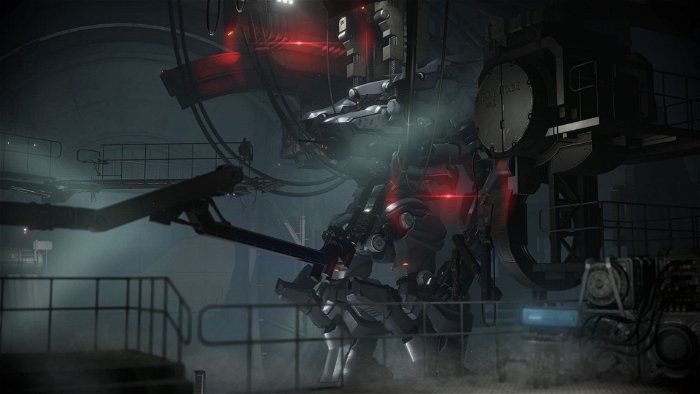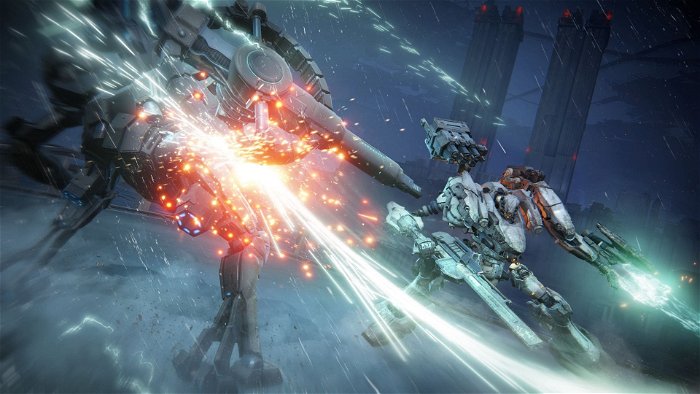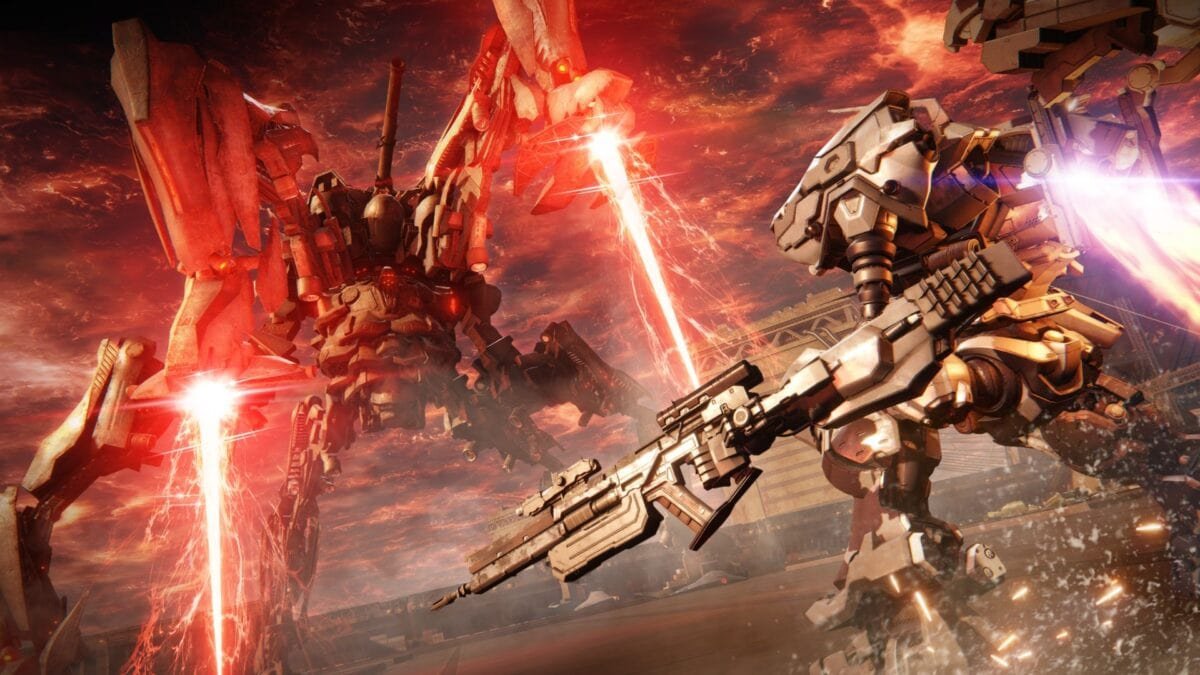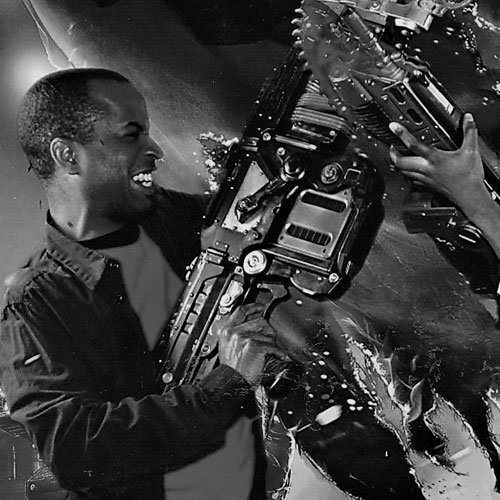After a long, 10-year hiatus, FromSoftware’s popular mecha-action-sim franchise Armored Core has finally returned to modern PlayStation and Xbox platforms as well as PC with its latest installment, Armored Core VI: Fires of Rubicon. As someone who was there from the beginning when the series made its debut on the original PlayStation, I’ve always had a soft spot for this IP thanks to my love of 80’s and 90’s anime, giant robots and sci-fi in general. While I found the early games in the series to be rather clunky in both their visuals and gameplay experiences even back then, I always hoped that they would one day match the quality of their riveting, action-packed CG trailers.
Fast forward 25 years to the present, and my wish appears to have been granted… but at what cost to my sanity?
In Armored Core VI: Fires of Rubicon, humanity’s future has long mastered interplanetary travel and has colonized other worlds with the aim of exploiting their natural resources. Coral, a once plentiful and invaluable substance native to planet Rubicon 3 that has spearheaded human technology and advancement for centuries, has grown scarce in the wake of a recent cataclysm. Predictably, mega-corporations, their subsidiaries and other interested parties now battle ruthlessly over what Coral is left, employing PMCs to do the heavy lifting in their proxy war.

Players step into the shoes of C4-621, a voiceless “augmented human” AC pilot who operates as an independent mercenary, also known as a “hound,” for Handler Walter. This enigmatic war profiteer capitalizes on the ongoing conflict by pitting various factions against each other. After receiving life-saving surgery from Walter, 621 undertakes missions both to repay this debt and to accumulate the funds needed to recover his lost life and memories, which were compromised due to his augmentations. The lore isn’t as deep as one would expect from a Dark Souls or Elden Ring, but it’s just enough of an intravenous drip to compel players to get to the end of the next mission.
“The lore isn’t as deep as one would expect from a Dark Souls or Elden Ring, but it’s just enough of an intravenous drip to compel players to get to the end of the next mission.”
When it comes to missions, veterans of the Armored Core series will find the mission structure and gameplay loop of Armored Core VI comfortably familiar. Missions are gradually assigned to 621 by Handler Walter, usually just two at a time. There’s no world map or free-roaming; the game is mission-centric, focusing solely on your Armored Core (AC). It’s all about the mission and your AC, literally the antithesis of souls-like.
After enduring a challenging opening tutorial with a default mech, players earn their official mercenary license and the “Raven” callsign. They are then encouraged to visit the Garage for basic ALLMIND (Virtual Reality) training exercises. Here, players can also customize their AC using a limited selection of parts. Once prepared, they can embark on a “Sortie” to complete the missions assigned by Handler Walter. Completing these tasks unlocks the Parts Shop and rewards players with COAM (the game’s currency), new parts, additional training exercises, and more missions.

Players are well-advised to familiarize themselves with the game’s four types of AC categories as soon as possible, each distinguished by their “leg-type.” Bipedal legs offer balanced performance and closely resemble human legs. Reverse Joint legs are designed for enhanced jumping capabilities and suit fast, lightweight builds. Tetrapod legs allow for extended hovering in the air with low energy consumption, making them ideal for aerial assaults. Finally, Tank legs maximize AC health and stability, allowing for heavy weapon fire without recoil penalties, even when moving at full speed.
As with previous Armored Core titles, players must carefully weigh the pros and cons of these AC types against the diverse array of parts, weapons, and operating system (OS) upgrades available. The goal is to assemble the optimal machine for each mission without overburdening the AC or exceeding its energy capacity, otherwise known as an “EN Shortfall,” which would prevent the AC from leaving the Garage.
This intricate balancing act becomes even more engrossing once players unlock OS Tuning. Here, OST chips earned in battle can be used for upgrades that bend many of the game’s established rules. But let’s not get ahead of ourselves.
Another essential skill every player must master is the new Stagger mechanic. In simple terms, this is a stamina bar that every AC—including both the player’s and formidable enemy units—possesses. Officially known as the Attitude Control System (ACS), this bar fills up as an AC sustains damage or “strain,” with some attacks inflicting more strain than others.
Filling the Stagger meter to full capacity will leave the target “Staggered,” making them vulnerable and exposed to increased damage. Each hit landed in this state counts as a direct hit, allowing for massive damage potential against boss opponents—but players should note that they are also susceptible to the same mechanics.

Players will inevitably face a level or boss that proves insurmountable in their current AC configuration. It’s at this point that players will either continue to fail repeatedly, or quickly realize that combat represents only half of the Armored Core VI experience; the other half lies in Assembly, Observation, and Experimentation.
After a defeat, players are encouraged to dissect what went wrong—be it specific enemy attacks they failed to dodge or weapons that proved ineffective. Armed with this insight, players should return to the Garage to adapt their AC accordingly, targeting the identified weaknesses before re-engaging in combat.
“Having said all that, retooling your Armored Core to defeat a formidable foe is still very much a trial-and-error process, and unless you’re an AC diehard with bottomless patience, you’re likely to get somewhat frustrated.”
This feedback loop is integral to the compelling gameplay of Armored Core VI. Tough enemies aren’t merely obstacles; they are puzzles waiting to be solved. For instance, a lightweight AC build with reverse-joint legs and dual shotguns might be the ideal setup to counter a fast opponent reliant on shields. Alternatively, a tank-leg build optimized for high damage absorption and long-range, explosive firepower could be another viable approach, especially for those who prefer to keep their distance. Each solution caters to a different playstyle, but both are equally effective.
Having said all that, retooling your AC to defeat a formidable foe is still very much a trial-and-error process, and unless you’re an AC diehard with bottomless patience, you’re likely to get somewhat frustrated. I’m living proof of it, having spent two or more consecutive evenings in a row trying to figure out how to beat just one pesky boss, on more than one occasion. It’s a well-known fact that Armored Core games are infamous for their difficulty, and it’s no different with Armored Core VI, even when you have a decent inkling of what you are doing. I’ve no doubt my angry screams and cussing kept the neighbors up last week at some point.

One irritating aspect that greatly contributed to my frustration with the game is that players can respawn, resupply and even reconfigure their AC an unlimited number of times from a mid-mission checkpoint, but they must leave the mission entirely and start it again from scratch if they wish to visit the Parts Shop. Granted, this makes total sense logically, after all, why would there be a friendly neighborhood mech store deep behind enemy lines?
What this ultimately means for players however is that if they are stuck on a boss and don’t already have the right tools in their arsenal to defeat it, they’ll be spending a significant amount of additional time browsing in the shop. Heaven help them if they don’t have enough COAM for the parts they need and have to go back and grind past missions to raise funds first, rather than make progress in the mission they were initially working on. It can all be a bit of a momentum killer.
The Parts Shop also has some weirdness with it that I’m not crazy about, like not being able to equip a weapon that I initially purchased for use on my AC’s right arm or shoulder on the opposite arm or shoulder. I can understand having to purchase the same weapon twice in order to dual-wield, but really?
And while Armored Core pros like Oroboro will swear by certain parts (e.g. legs), making all the difference in having an easier time against the game’s bosses, the Parts Shop in the game’s early hours is rather slim pickings. Even when I had sufficient funds and found it challenging to build an AC with the parts available that could dominate, at best, I only managed to squeak by.
On the bright side, all parts in the shop can be purchased, sold, or bought back at the same cost rather than taking a loss, so selling a valued weapon in order to raise funds to purchase a new weapon is more akin to trading than purchasing. Should your experiment not work out, you can always sell the new item back to the shop and afford to buy your old item back. Stuck at a mission and need COAM to buy a better weapon to progress but don’t want to sell anything in your arsenal? Completed campaign and Arena missions can be revisited to earn more COAM as well as collectibles or secrets you may have missed.

Our 2012 review of Armored Core V described the graphics of FromSoftware’s last AC entry as “unimpressive” and “boxy,” with poor lighting and particle effects, a sentiment that I vividly remember sharing when playing the game on Xbox 360 back then. Thankfully, the same certainly can’t be said for Armored Core VI, however, whose visuals represent a true generational leap over its predecessor, with spectacular-looking alpha effects, motion blur, bokeh depth of field and a buttery smooth 4K60 presentation when the game is set to prioritize framerate. A “Prioritize Quality” mode is available that features ray tracing within the Garage, but it runs at sub 60fps and is wildly inconsistent.
In Framerate Mode, energy weapons like the pulse blade and laser rifle look especially dazzling in motion, and the exhaust glow and heat waves that radiate off one’s boosters to both illuminate and visually distort the rear chassis of one’s AC are nothing short of breathtaking. And that’s not even mentioning the game’s many screen-filling bosses! Like in all AC games, the environments are completely devoid of human life, but otherwise, they are well-lit atmospherically, highly detailed, and feature a wide number of vastly different biomes. The industrial areas are noticeably less boxy than before, too.
Armored Core VI feels phenomenal to play on an Xbox gamepad, offering three default options that are fairly intuitive as well as allowing for three custom controller mappings that can be programmed to one’s liking. I personally prefer to use my Elite Series 2 controller with the paddles attached to achieve a more immersive feel, but regardless of which option, boosting about the game’s levels “Gundam-style” has never felt as reactive as it does with this game. The game’s electronic soundtrack and audio effects are also excellent, but sadly the surround mix is basic, with no tailored options for headphones or different surround sound options.

One final critique worth noting is that despite Armored Core VI’s impressive audio-visual quality, exceptional animations, and special effects, the game struggles to clearly convey to new players whether their attacks are effective. Yes, there is an ACS meter above the boss’s health bar indicating how close the enemy is to being stunned, but the visual cues leading up to that moment are frustratingly ambiguous. The meter’s sudden increase often seems entirely arbitrary.
This ambiguity is compounded by inconsistent feedback on the outcomes of specific attacks. Take BALTEUS, an early-game boss, as an example. Sometimes, I can bypass his defences to execute an Assault Boost kick, launching him across the screen and leaving him vulnerable to follow-up attacks that could build Stagger. However, in seemingly identical situations, the kick connects but has no impact. There are no clear visual indicators to explain why an attack succeeds or fails, and if such cues exist, they’re easily lost in the heat of battle.
To address this, clearer visual signals like visible smoke, sparks, or flames from damaged areas would help players understand when and where to focus their attacks. Additionally, more specific tactical guidance from Handler Walter through the comms could reassure players that they’re on the right track.

Unfortunately, due to issues on FromSoftware’s end with whitelisting my console for early online multiplayer access, I couldn’t test Armored Core VI’s 1v1 or 3v3 online modes. However, Bandai Namco’s recent Live Showcase featured the 3-on-3 team versus mode, which looked promising. What intrigued me most was the possibility for players to share their AC builds online (though recipients would still need to purchase or unlock the parts). This feature could substantially ease the learning curve for newcomers, making the game more accessible.
Whether or not you should purchase Armored Core VI: Fires of Rubicon largely depends on your enthusiasm for the AC series. Long-time fans waiting for a new Armored Core title will find this game to be an easy recommendation; it’s unquestionably the most polished installment in the franchise’s history. Casual players, however, must be prepared to embrace the game’s steep learning curve to get their money’s worth. But if you’re a fan of giant robots, anime, all things FromSoftware, and above all, a challenge, this game offers an unmatched experience this summer.






